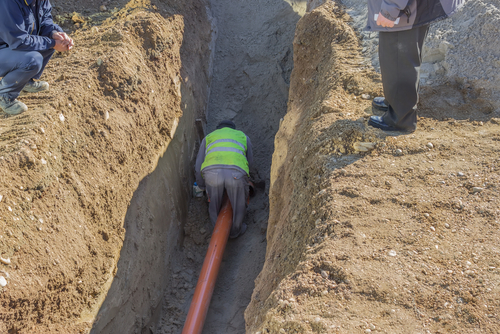
Worker Deaths Increase Due to Trench Work Hazards
Although our work injury attorneys recently posted 2017 data that supported a decline in Kentucky’s worker injuries, the Kentucky Fatality Assessment and Control Evaluation Program (FACE) has released a new hazard alert warning of the dangers of trench work in response to an uptick in trench box or trench collapse related deaths among the state’s construction workers. FACE is an occupational fatality prevention and surveillance program of the Kentucky Department for Public Health and the University of Kentucky.
Kentucky’s Dangerous Jobs
Excavation and trenching are among the most hazardous construction operations. Occupational Safety and Health Administration (OSHA) data shows 23 construction workers were killed in trench collapses in 2016, exceeding the combined total from 2014 and 2015. In Kentucky, FACE reported three trench-collapse deaths occurred from June 2015 to December 2017.
- Case 1: Two employees were working within a trench box. However, the top of the trench box was 4 feet 8 inches below the surface. A large section of ground and concrete broke and collapsed into the trench, striking and killing one of the workers. (2015)
- Case 2: A construction worker was installing an 18-inch drainage pipe. He entered the trench (benched on one side and vertical on the other) to check the depth. The vertical side collapsed onto him. (2016)
- Case 3: A subcontracted employee was working in an approximately 15-foot-deep trench, when the sides of the trench caved in and engulfed him. (2017)
Employers Are Responsible for Maintaining a Safe Workplace
Basic safeguards to prevent trench collapse must be followed and employees must be trained to recognize and avoid trench cave-ins and other trench work hazards to lessen the alarming rise in fatalities. FACE, with the help of OSHA, has identified several safety strategies employers should be implementing to protect construction workers from trench work injuries and fatalities.
- Have a competent person inspect trenches before each shift and after every rainstorm or other hazard-increasing occurrence.
- Institute protective measures such as benching, shoring, sloping and shielding for all trenches between 5 feet and 20 feet deep. For trenches 20 feet and deeper, require a registered professional engineer to design these systems.
- Keep excavated soil, also known as spoils, and other materials at least 2 feet from trench edges.
- Train employees on how to spot signs of imminent trench collapse, including tension cracks, bulging and toppling.
- Provide a safe method to exit trenches within 25 feet of workers.
Employers across the U.S., including right here in Kentucky, have an enormous responsibility to create a safe work environment for their employees. When they fail to take that responsibility seriously, workers are blasted with lifelong injuries and put at great risk of being involved in a fatal accident.
Owensboro and Madisonville Industrial Injury Lawyers — No Recovery, No Fee
With offices in Owensboro and Madisonville, Rhoads & Rhoads represents industrial accident victims and their families throughout Western Kentucky. We offer free initial consultations, and all cases are taken on a contingency fee basis, which mean there is no payment required up front. We get paid only if we win or settle your case, so there is NO RISK involved.
Call us at 888-709-9329 or contact us by e-mail to schedule an appointment with one of our Madisonville or Owensboro personal injury attorneys.


